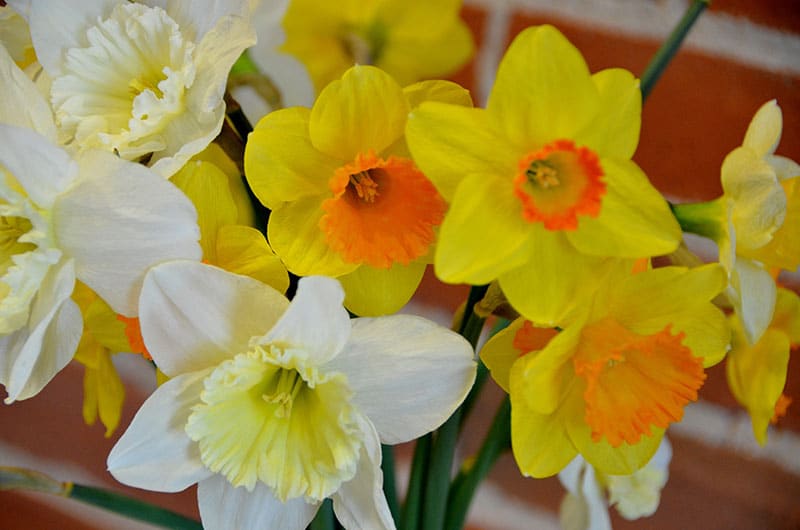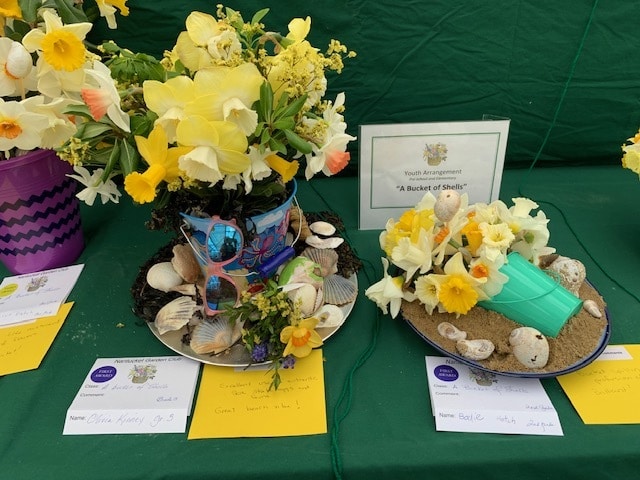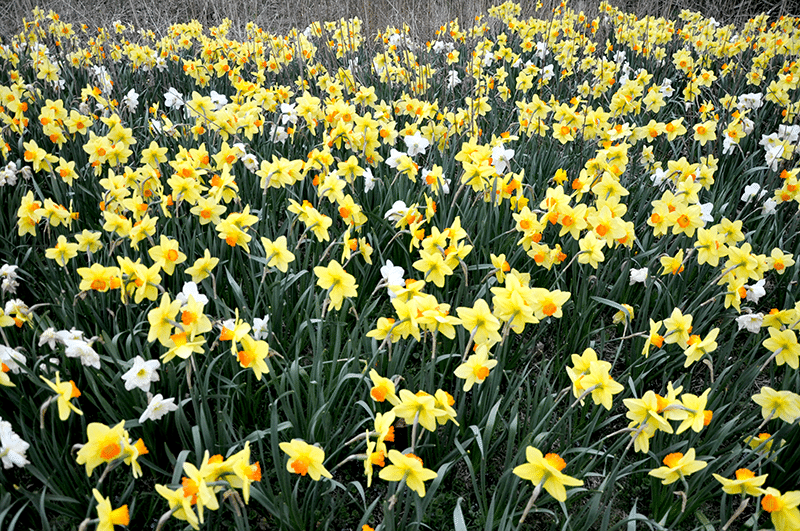William Wordsworth’s beautiful Daffodils poem conjures the image of dancing daffodils in the landscape just as Nantucketers enjoy their island yards and by-ways dotted with the much-awaited heralds of spring. This year would be a good time to get outdoors and capture the beautyand grandeur of the daffodil not only in the landscape of the Milestone Road or in a backyard.
Photographing any flower or flowering tree is a rewarding experience both in capturing a moment in nature’s seasons and in finding an outlet for creativity in the artistic expression that isphotography. Whether you have a smartphone or a camera, it is important to know that success in photography is not about the equipment you use but rather the way you go about the capture, paying attention to the detail.
Some tips and techniques to help your flower photography:
- Take your flower pictures when the lighting is good and the wind is still. Even the most gentle breeze can cause a daffodil to quiver and results in blur in a close up. Early in the morning is an ideal time to shoot as it is often still and the light is the best. Early morning and late afternoon light are called “the golden hours” to shoot. Mid-day sunshine tends to overexpose your subject. A bright overcast day will give you good light as well.
- Be choosey – look for a flower in pristine condition – no insect damage or missing parts. Remove particles of dirt if you are doing a close up. You can use a soft brush if you haveone. For a dewy look, gently spray the petals with a small travel atomizer. It can add “sparkle” to your photo.
- Compose your shot in your camera view finder. Look at the flower subject from differentpositions to see what angle looks best. Photographers call that “working the shot.” Lightcan play differently on your subject with different angles – chose what you like best. Daffodils with long trumpets can be tricky with in and out focus issues, so try taking those close ups from the side so you can get more of your subject in total focus. Note: Smartphone users, should shoot close ups in portrait mode if your phone has that feature. It will create a shallow depth of field (a blurry background) which will make your subjectpop just like your people shots.
- Always check your backgrounds – both under and around the flower subject. Remove small distractions like twigs and leaves around the flower that you see in your viewfinder.Check your backgrounds for any distractions to the main subject. It is easier to “groom” your shots before you push the shutter rather than to have a regret or to have to eliminate in post-processing.
- If you are photographing several flowers or a garden, look at the tones in the background.Contrasting tones will make your image pop – ex. a clear blue sky will really show off that yellow daffodil.
- When you find your best angle, fill the viewfinder with the flower subject and position it using classic composition methods like the “rule of thirds.” Imagine a tic-tac-toe puzzle and position your subject where the lines cross at 4 points – ex. a daffodil’s trumpet in a close up should face into the photo to keep viewer attention in the photo.
- When you have your subject composed, focus on the part of the image you want to be thesharpest – this could be the stamen, or even an insect on the flower – steady your camera and hold your breath as you press the shutter.
- Shooting across the top of a field of daffodils can result in a breath-taking picture. Try getting down for a lower perspective. Lie on the ground and take a picture from beneath a flowering tree. Always look outside the box. A large area of flowers should be treated like a landscape composition – try to include some foreground, middle-ground, and background interest to create a sense of depth and scale. Try and use leading lines such as a roadway, path, or a pattern in nature such as a stream.
- If weather is not cooperating, bring the outside in and photograph a vase of flowers of sunny daffodils or create a still life with objects at hand. Use natural windowlight near a window. Late day is warm light and falls at a good angle. Photographing a houseplant is great entertainment during the winter doldrums.
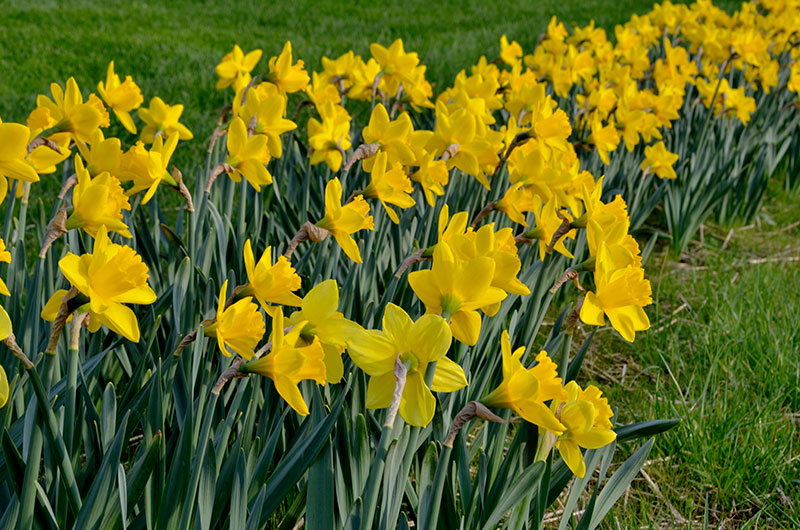
If you get more serious with your photography, you might consider investing in a tripod which will allow you to avoid camera shake and a slower shutter speed if your camera needs it. No tripod? Improvise by bracing your arms close to your sides and hold your breath as you pushthe shutter. Look for solid objects in your surroundings like a rock, a tree branch, or a fence rail or wall.
Nantucket is a garden island so there is something to shoot every season of the year. Natural beauty is everywhere. Whether it is capturing a spring daffodil, the summer flowers of spring in a garden or a window box, or the waning fall hydrangea blooms, or crimson moors, get out there and capture and SHOOT! It will make for enduring beauty that you can enjoy year- round.
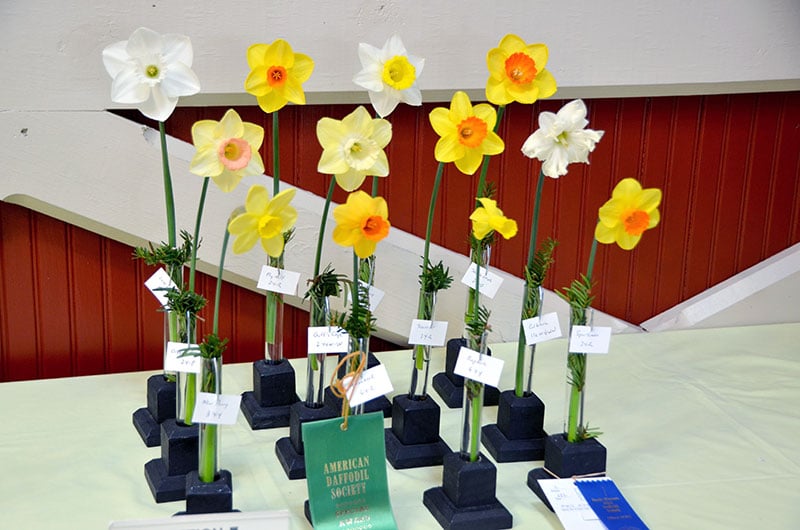
Grab your camera, take a ramble in the moors or on a quiet town street and see what you can discover. Keep shooting!




